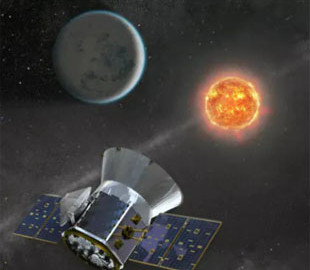
NASA's Transiting Exoplanet Survey Satellite (TESS) encountered a temporary interruption in its scientific observations and entered safe mode as early as April 8.
The team is investigating the cause of this outage, which coincided with scheduled engineering work. Despite this unforeseen pause, the satellite remains in optimal condition, which gives hope for a quick solution to the problem. According to a recent update from NASA, work is already underway to diagnose and fix the situation. The team is working to return TESS to its important science mission in the coming days.
“The team is investigating the root cause of the safe mode that occurred during scheduled engineering work. The satellite itself remains in good condition”, – stated in NASA. “The team will continue to investigate the problem and will return TESS to scientific observations in the coming days”.
How TESS searches for exoplanets
TESS plays a key role in NASA's search for exoplanets orbiting dwarf stars. It has just completed its initial two-year study of the Sun's neighborhood, tracking the periodic dimming of stars caused by transiting planets. Although the original mission officially ended on July 4, 2020, TESS continues its extended mission, casting its gaze across space in search of celestial wonders.
During its first survey, TESS carefully photographed approximately 75% of the star-studded sky. It discovered 66 previously unknown exoplanets and presented astronomers with nearly 2,100 candidate worlds awaiting confirmation.
The mission is a joint effort led by the Massachusetts Institute of Technology (MIT) in Cambridge, Massachusetts, and overseen by NASA's Goddard Space Flight Center in Greenbelt, Maryland. Dr. George Ricker from the Institute of Astrophysics and Space Research named after MIT's Kavli is the principal investigator and leads a team of dedicated scientists and engineers. Partnerships with organizations such as Northrop Grumman, NASA Ames Research Center, Harvard-Smithsonian Center for Astrophysics, MIT Lincoln Laboratory and the Space Telescope Science Institute further enrich the breadth and depth of the mission.
In the latest astronomy news related to TESS, researchers led by the Harvard-Smithsonian Center for Astrophysics presented a remarkable discovery – exoplanet “warm Jupiter” known as TOI-4641 b. This celestial heavyweight is estimated to be nearly four times the mass of Jupiter and is in orbit around a fast-spinning F-type star. Astronomers have used a satellite to detect a signal in the star's light curve that hints at the presence of an orbiting planet.
Despite the difficulties associated with the long rotation period of warm Jupiters, which can range from 10 to 200 days , researchers confirmed the planetary status of TOI-4641 b through careful analysis and further observations. TOI-4641 b has a radius of about 0.73 Jupiter radii and a maximum mass of 3.87 Jupiter masses.

